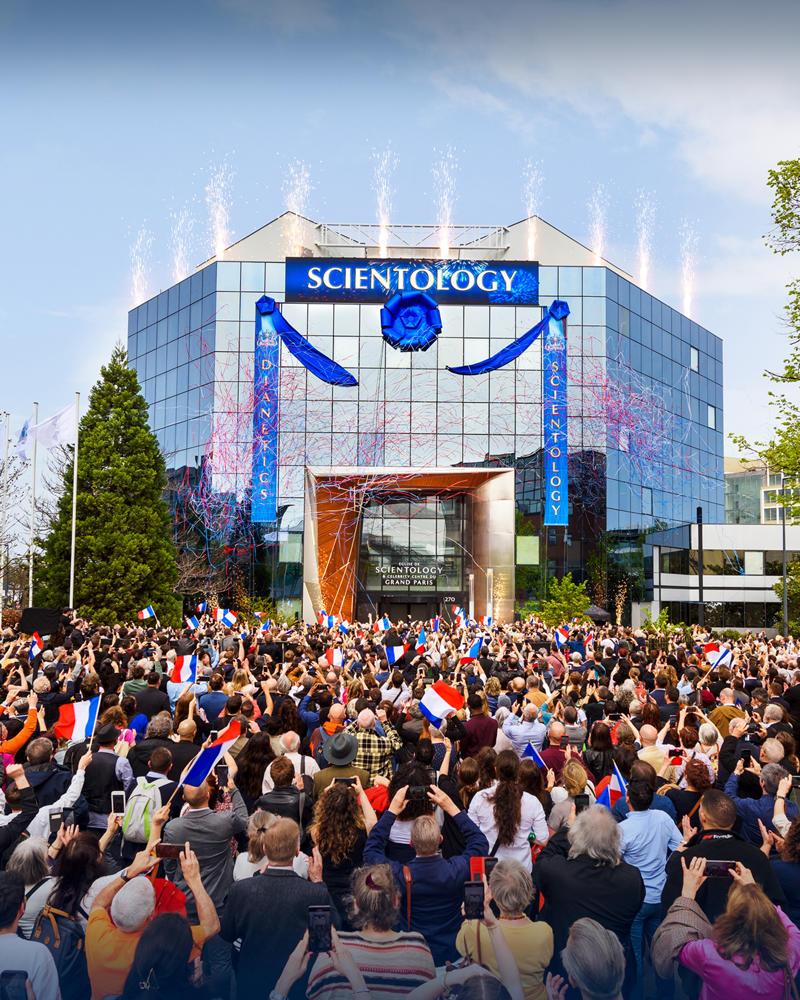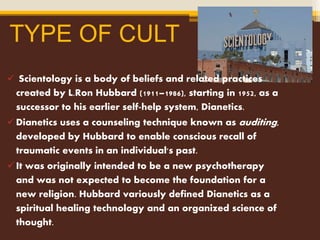A Newbie's Overview to Scientology: What You Required to Know

Beginnings and History
The beginnings and history of Scientology trace back to the early 1950s when L. Ron Hubbard, a prolific sci-fi author, founded this spiritual motion. Hubbard at first established a self-help system called Dianetics, which got popularity and ultimately evolved right into what is now known as Scientology. The official Church of Scientology was developed in 1954 in Los Angeles, California, with the publication of Hubbard's publication "Dianetics: The Modern Scientific Research of Mental Health And Wellness."
Throughout the years, Scientology has faced both praise and controversy (Scientology). Fans of Scientology rely on the idea of thetans, immortal souls present in every individual. The church's mentors concentrate on spiritual recovery and attaining a state of clear, complimentary from unfavorable emotions and terrible experiences
Regardless of its development worldwide, Scientology has undergone objection regarding its methods, financial transparency, and treatment of members. The church has actually been associated with different legal battles and debates, contributing to its mixed online reputation in the public eye. Nonetheless, Scientology stays a significant religious movement with a committed following.
Core Beliefs and Practices
Building upon the historical structure of Scientology, the core beliefs and practices of this religious activity delve right into the essential principles leading its followers in the direction of spiritual enlightenment and individual development. At the heart of Scientology is the belief that every individual is a never-ceasing soul, called a thetan, that has lived via plenty of past lives. Via the method of bookkeeping, a kind of spiritual counseling, fans aim to clear themselves of adverse experiences and emotions that hinder their spiritual development. Central to Scientology is the pursuit of a state called "Clear," where people obtain a heightened level of recognition and self-realization.
Another trick facet of Scientology is the focus on the concept of characteristics, which stand for various facets of life that an individual is striving to survive across. These characteristics include the self, household, groups, the human race, all life kinds, the physical universe, spirituality, and infinity. By recognizing and balancing these dynamics, followers look for to attain consistency and success in all areas of their lives. The core methods of Scientology, including auditing and studying the trainings of L. Ron Hubbard, are developed to aid individuals accomplish spiritual fulfillment and lead an extra enjoyable existence.
Founder and Leadership
Within Scientology, the owner and management play pivotal roles fit the direction and techniques of this spiritual activity. L. Ron Hubbard, a science fiction author, founded Scientology in the early 1950s. Hubbard created a set of beliefs and techniques that develop the structure of Scientology, consisting of the principle of the immortal spirit, referred to as the thetan, and the procedure of auditing to assist individuals conquer previous traumas and reach a state of spiritual enlightenment called Clear.
The Church of Scientology is currently led by David Miscavige, who took over leadership after Hubbard's death in 1986. As the Chairman of the Board of the Religious Innovation Facility, Miscavige is responsible for managing the dissemination of Scientology trainings, guaranteeing the conventional method of auditing, and handling the church's worldwide procedures.
The management within Scientology is very centralized, with strict adherence to the plans and trainings established by Hubbard. The authority of the management is upheld with an ordered structure that governs the church's activities and outreach efforts.
Conflicts and Criticisms
In the middle of the structured pecking order and adherence to L. Ron Hubbard's mentors exists a world of objections and conflicts surrounding Scientology's techniques and impact. Among the most substantial criticisms of Scientology is its category as a cult by some previous participants and different professionals. Movie critics say that the company utilizes coercive and manipulative techniques Click Here to maintain members and remove cash from them via pricey courses and solutions.
Another questionable aspect is the practice of disconnection, where members are motivated to cut ties with friends and family that are vital of Scientology - Scientology. This plan has actually led to many individual tragedies and has been extensively condemned as dissentious and unsafe
Additionally, Scientology's secretive nature and hostile legal strategies versus critics and previous members have actually stimulated problems about openness and freedom of expression. The organization's tax-exempt standing as a religious beliefs in some countries has actually also been a topic of conflict, with movie critics questioning the legitimacy of its religious claims. These conflicts and criticisms continue to fuel disputes about the principles and practices of Scientology.
Impact and Presence
With its substantial network of churches and outreach programs, Scientology has cultivated a remarkable impact and visibility in various communities worldwide. The Church of Scientology, established by L. Ron Hubbard in the 1950s, has actually established itself as an unique spiritual activity with a global reach. Through their find this churches, objectives, and neighborhood programs, Scientology has actually intended to spread its mentors and techniques to people looking for spiritual knowledge and individual growth.

In addition to its physical visibility, Scientology's impact can be observed in numerous areas, consisting of entertainment, education, and humanitarian undertakings. Prominent members of the home entertainment market have actually publicly endorsed Scientology, bringing further visibility to the religious beliefs. The Church's social programs, such as medicine recovery campaigns and disaster relief efforts, have actually additionally added to its impact in neighborhoods around the globe.
Verdict
In verdict, Scientology's beginnings map back to the trainings of L. Ron Hubbard, stressing spiritual development and self-improvement via bookkeeping and training. Regardless of conflicts and criticisms bordering the company, Scientology remains to have a global existence and influence on its fans. The core ideas and practices of Scientology form the method its participants engage with the globe around them, adding to the recurring Go Here debate regarding the credibility and impact of this questionable faith.
Building upon the historic structure of Scientology, the core ideas and practices of this religious activity dive into the essential concepts guiding its followers in the direction of spiritual enlightenment and individual growth. The core methods of Scientology, consisting of auditing and studying the mentors of L. Ron Hubbard, are created to assist individuals attain spiritual gratification and lead a much more rewarding presence.
Hubbard created a collection of ideas and methods that develop the structure of Scientology, consisting of the concept of the immortal spirit, known as the thetan, and the procedure of bookkeeping to help individuals overcome past injuries and get to a state of spiritual knowledge recognized as Clear.
In the middle of the organized hierarchy and adherence to L. Ron Hubbard's teachings exists a realm of debates and criticisms surrounding Scientology's methods and influence. Via their churches, missions, and community programs, Scientology has actually intended to spread its techniques and trainings to individuals seeking spiritual enlightenment and personal development.
Comments on “Inside Scientology: A Deep Dive into Its Organizational Structure”